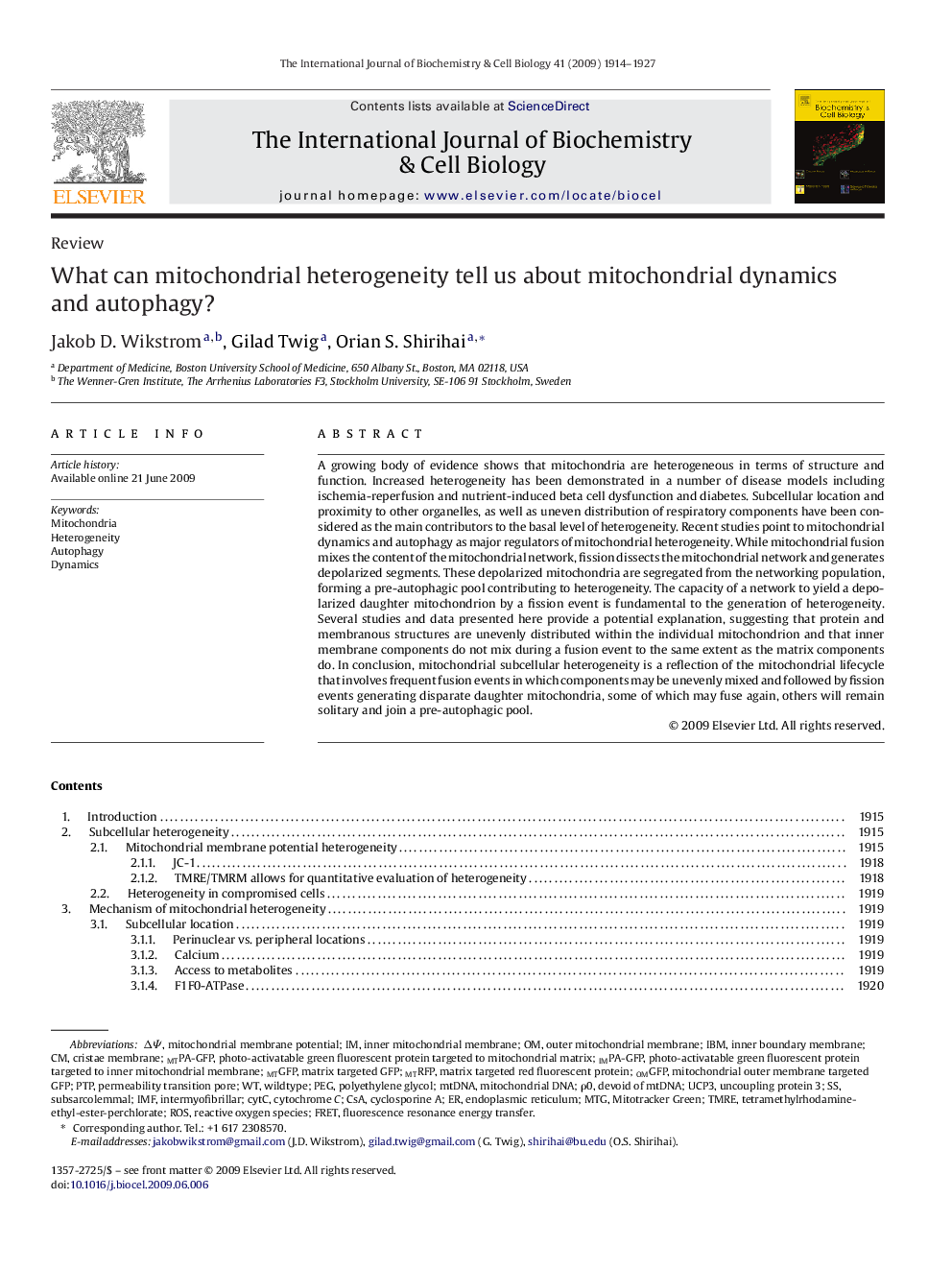| Article ID | Journal | Published Year | Pages | File Type |
|---|---|---|---|---|
| 1984069 | The International Journal of Biochemistry & Cell Biology | 2009 | 14 Pages |
A growing body of evidence shows that mitochondria are heterogeneous in terms of structure and function. Increased heterogeneity has been demonstrated in a number of disease models including ischemia-reperfusion and nutrient-induced beta cell dysfunction and diabetes. Subcellular location and proximity to other organelles, as well as uneven distribution of respiratory components have been considered as the main contributors to the basal level of heterogeneity. Recent studies point to mitochondrial dynamics and autophagy as major regulators of mitochondrial heterogeneity. While mitochondrial fusion mixes the content of the mitochondrial network, fission dissects the mitochondrial network and generates depolarized segments. These depolarized mitochondria are segregated from the networking population, forming a pre-autophagic pool contributing to heterogeneity. The capacity of a network to yield a depolarized daughter mitochondrion by a fission event is fundamental to the generation of heterogeneity. Several studies and data presented here provide a potential explanation, suggesting that protein and membranous structures are unevenly distributed within the individual mitochondrion and that inner membrane components do not mix during a fusion event to the same extent as the matrix components do. In conclusion, mitochondrial subcellular heterogeneity is a reflection of the mitochondrial lifecycle that involves frequent fusion events in which components may be unevenly mixed and followed by fission events generating disparate daughter mitochondria, some of which may fuse again, others will remain solitary and join a pre-autophagic pool.
